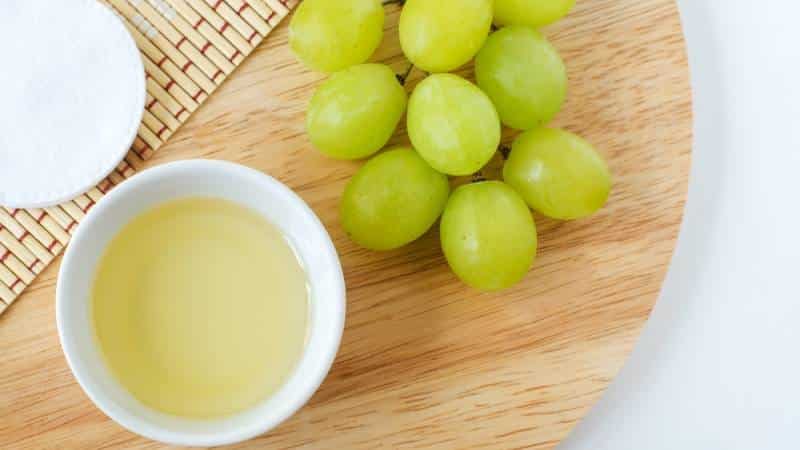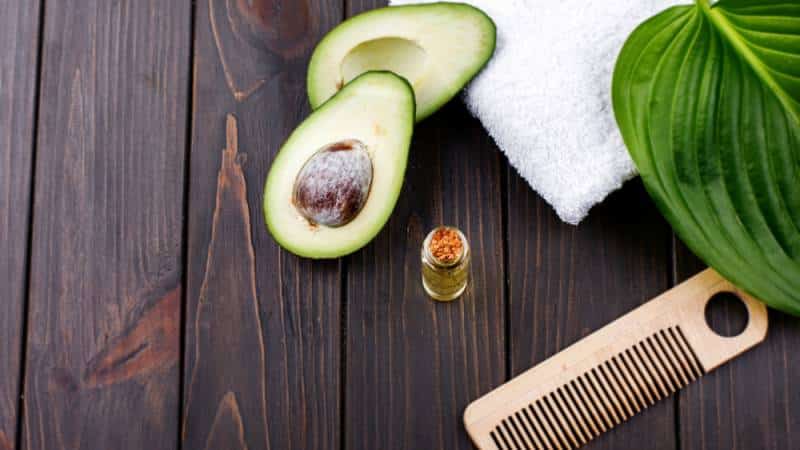Grapeseed oil is a popular natural beauty treatment, and many people believe it to be beneficial for low porosity hair. But what does the research say? Is grapeseed oil good for low porosity hair?
As a hair stylist, I have had many clients ask me whether or not they should use grapeseed oil on their low porosity hair. This is a tricky question, as there is not much research available on the benefits and drawbacks of using grapeseed oil for low porosity hair. However, based on my experience and research, I do believe that there are some potential benefits to using grapeseed oil for low porosity hair.
Let’s take a closer look.

What is Grapeseed Oil?
To start, it’s important to understand what grapeseed oil is. Grapeseed oil is a plant-based oil that is derived from the seeds of grapes. It has been used for centuries in cooking, skincare, and hair care. It is thought to be rich in vitamins and antioxidants, which can help strengthen and protect the hair from damage.
How Does Grapeseed Oil Affect Low Porosity Hair?
From my experience, I have found that grapeseed oil can help moisturize and strengthen hair. This is due to its high content of fatty acids and vitamin E, which are often missing in low porosity hair. Additionally, using grapeseed oil can help to close the cuticle layer, which can improve hair health and reduce dryness.
With that said, if you’re looking for a natural way to improve the health and appearance of your low porosity hair, then grapeseed oil may be worth trying. Just be sure to do your research, consult with a trusted professional, and take any necessary precautions while using this oil. In the end, it all comes down to what works best for your unique hair type and needs.
So, is Grapeseed Oil Good for Low Porosity Hair?
In short, yes! Grapeseed oil can be a great way to help moisturize and nourish your low porosity hair. It can be used as a leave-in conditioner or applied directly to the strands, and it can help seal in moisture and prevent breakage. Additionally, it is a lightweight oil that won’t weigh down the hair or cause buildup, making it a great choice for those with low porosity hair.
If you have low porosity hair, incorporating grapeseed oil into your hair care routine may help improve the health and appearance of your hair. Just be sure to do a patch test first to make sure that your skin is not sensitive to the oil, and always use a small amount to start, as a little goes a long way with grapeseed oil.

Are There Any Drawbacks to Using Grapeseed Oil for Low Porosity Hair?
While there are some potential benefits of using grapeseed oil for low porosity hair, there may also be some potential drawbacks. For example, some people report experiencing an itchy or uncomfortable scalp after using grapeseed oil. Additionally, there is some concern that the antioxidants in grapeseed oil may cause discoloration or fading of hair dye.
As with any new beauty treatment, it’s important to do your research and consult a trusted hair stylist or dermatologist before using grapeseed oil for low porosity hair. But overall, the potential benefits seem to outweigh the potential risks, and incorporating this natural oil into your hair care routine could help improve the health and appearance of your low porosity hair.
Things to Keep in Mind Before Using Grapeseed Oil for Low Porosity Hair
Before you start using grapeseed oil for low porosity hair, there are some important things to keep in mind:
- Your Hair Condition: It is important to keep in mind that your hair’s condition may vary depending on a number of factors, such as the environment you live in, your overall health and wellness, and other external influences.
- Product Selection: Another thing to consider is which product or brand of grapeseed oil you use for your low porosity hair. Some may be too heavy or thick, while others may contain harsh ingredients that could damage your hair over time.
- Allergies and Sensitivities: It is also important to consider any allergies or sensitivities you may have to different substances. This will help you figure out how your body will react to the grapeseed oil, and whether you should proceed with caution or avoid using it altogether.
Overall, if you take these things into account before using grapeseed oil for low porosity hair, then you can help minimize potential risks and get the most out of this natural product.

How to Use Grapeseed Oil for Low Porosity Hair
There are a few different ways to use grapeseed oil for low porosity hair. Each method has its own pros and cons, so it is important to find the one that works best for you. Some of the common methods include:
1) As a Leave-in Conditioner:
You can apply a small amount of grapeseed oil to your hair after washing and styling, or you can add some to your regular conditioner before applying it to your hair. This will help keep the strands moisturized and prevent the buildup of dry, flaky skin on the scalp.
2) As a Hot Oil Treatment:
You can also apply grapeseed oil directly to your hair as a hot oil treatment. Simply heat up some grapeseed oil and let it sit on your hair for about 10 to 15 minutes before rinsing it out. This will help deeply moisturize the strands, leaving them soft and shiny.
3) As a Scalp Massage:
Finally, you can use grapeseed oil as a scalp massage to promote circulation and stimulate the growth of healthy, strong hair. Simply apply a small amount of warm grapeseed oil directly to your scalp and gently massage it in before rinsing it out. This is a great way to soothe an itchy or irritated scalp, and can also be a relaxing way to wind down after a long day.
Whether you choose to use grapeseed oil as a leave-in conditioner, hot oil treatment, or scalp massage, it is important to start slowly and monitor your responses closely. This will help you figure out what works best for your unique hair type and needs, and will allow you to get the most out of this natural beauty product.

Some Alternative Oils for Low Porosity Hair
Other natural oils can also be used for low porosity hair, including coconut oil, jojoba oil, and argan oil. Each one has its own unique benefits and properties, so you may find that a combination of different oils works best for your specific hair type. And of course, it is always a good idea to consult with your dermatologist or hair care professional before making any major changes to your hair care routine.
The Bottom Line
In summary, grapeseed oil can be a great natural solution for low porosity hair. By taking the time to assess your individual needs and preferences, as well as considering potential risks and product selection, you can use this oil in a way that best meets your needs and helps you achieve healthy, beautiful hair.
Do you have low porosity hair? Have you tried using grapeseed oil for your hair? If so, what has been your experience with it? Let us know in the comments!
Related Read: Avocado Oil for Low Porosity Hair


